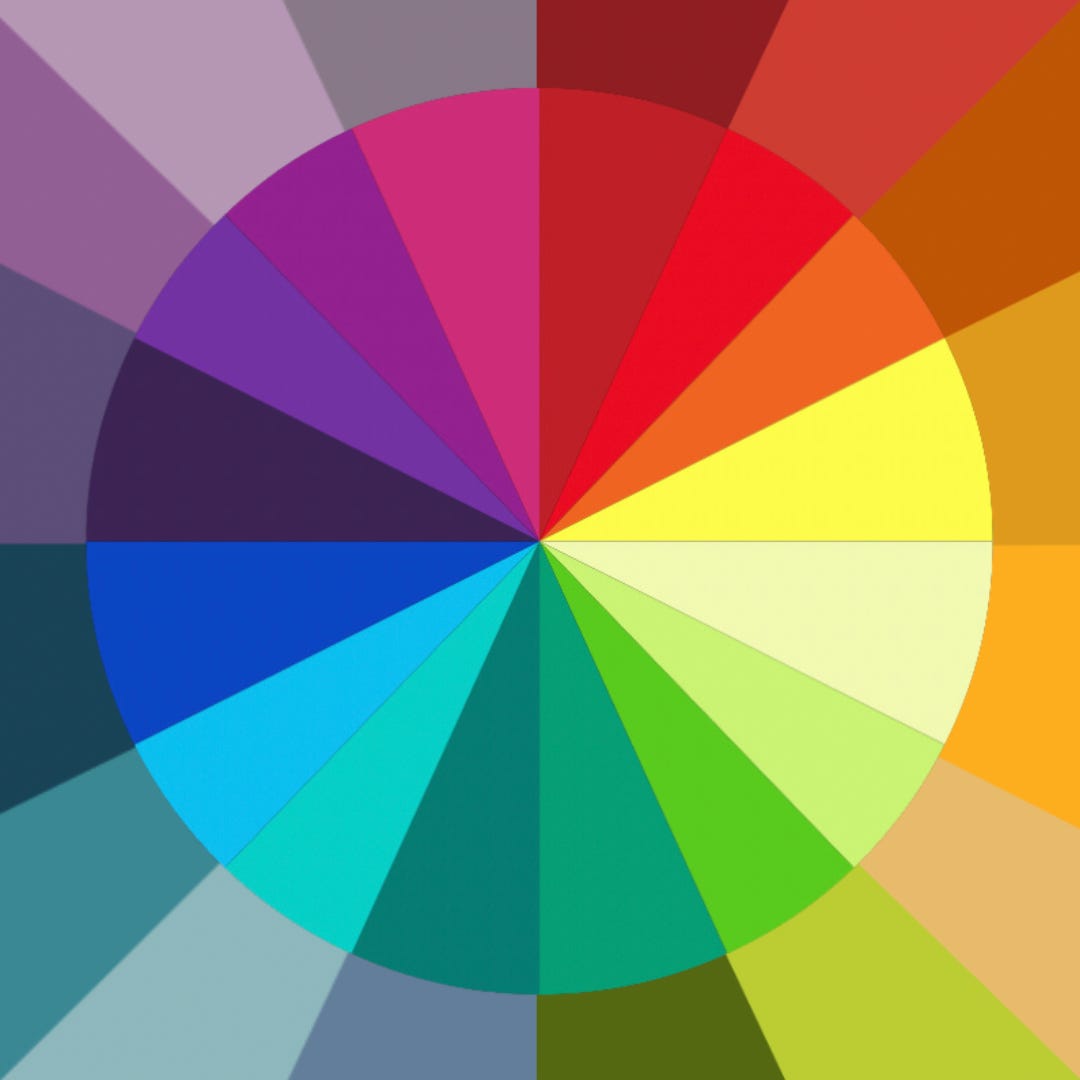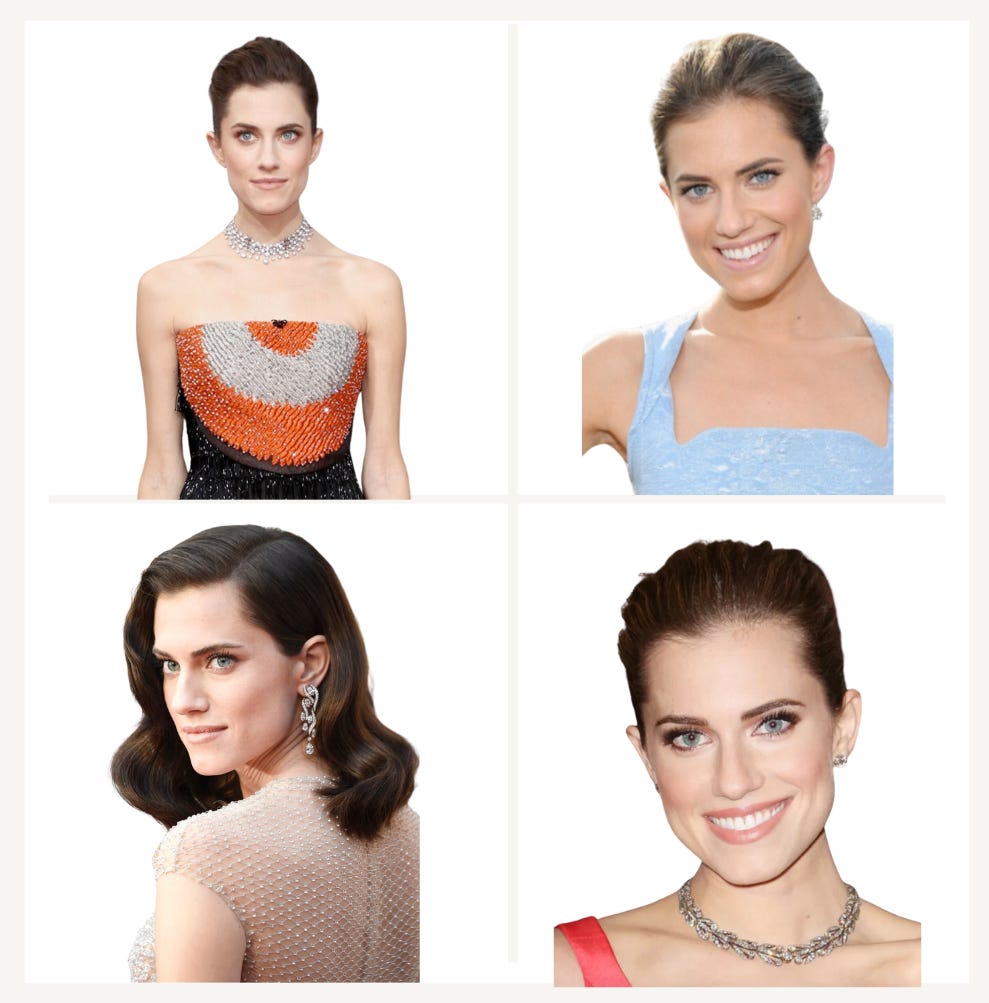There are countless advantages to discovering the colors that you wear well. When you wear hues that complement your natural features, your skin appears healthier, your eyes look brighter, and your overall appearance becomes more vibrant. Knowing that you look your best can positively influence how you carry yourself, which, in turn, shapes how others perceive you. With these benefits in mind, let’s delve into the topic of color analysis.
Differentiating the seasonal color palettes
Color analysis is a valuable tool for determining the colors that best harmonize with your intrinsic features, such as your skin tone, eye color, and hair color. The process begins by identifying whether you are best suited to cool or warm colors. Cool colors, characterized by blue undertones, are found on the left side of the following color wheel. Warm colors, with yellow undertones, are on the right.
Seasonal color analysis further divides these categories into bright and soft tones, resulting in four seasonal palettes: Winter, Spring, Summer, and Autumn. At a high level, bright colors are the purest, most unadulterated versions on the wheel (those in the center). Most bold, cool colors, such as cobalt blue, are associated with the Winter season, while clear, warm colors, like lemon yellow, are linked to the Spring season.
By contrast, the Summer and Autumn palettes are defined by colors mellowed by the addition of gray or black. Most gentle, cool colors, such as smoky grape, belong to the Summer season, while velvety, warm colors, like mustard, are part of the Autumn seasonal palette.
Navigating the exceptions
It's important to note that there are exceptions to these guidelines. For instance, true red, which falls on the warm side of the color wheel, can be universally flattering to all seasons. Blue-based reds, such as burgundy, cherry, and watermelon, which appear to the left of true red on the color wheel, are particularly flattering for Winters and Summers. On the other hand, orange-based reds, like poppy and geranium, which fall to the right of true red, are ideal for Springs and Autumns. Similarly, warm seasons can embrace blue hues with a hint of warmth, such as aqua and teal, while cool seasons can opt for greens that lean towards blue, like spruce and jade.

Additionally, some colors are considered "crossover" hues, meaning they complement more than one season. For example, deep teal is a versatile color that works well for both Summer and Autumn palettes, while vibrant violet looks equally stunning on many Winters and Springs. Naturally, the cool seasons share several colors, just as the warm seasons do.
Exploring sub-seasons and other color-typing systems
In addition to the four main seasonal palettes, some systems further refine these categories by introducing sub-seasons. Meanwhile, other color-typing systems, avoid seasonal classifications altogether but use similar characteristics to identify the colors that complement you. All of these systems offer even more nuanced approaches to finding the colors that best suit you, allowing for a highly personalized color palette.
The impact of wearing your best colors
Wearing colors from your palette can highlight your best features, bringing them into focus. To illustrate this, let’s explore examples of women wearing colors that either flatter or detract from their natural beauty.
Winter: Lucy Liu
Lucy Liu has exquisite, high-contrast coloring: very dark hair and eyes paired with fair skin, which allows her to wear high-contrast colors well. In the photos on the left, where she’s wearing warm, diluted colors, her complexion appears a bit sallow and her features are less defined. However, she truly stuns in the photos on the right, where she’s dressed in authoritative, cool Winter colors—including black—which reflect her intrinsic coloring.
Spring: Kate Hudson
It’s hard to dim Kate Hudson's radiance, but she does get overshadowed when she wears the wrong colors. In the photos on the left, where she’s wearing cool, dark tones and deep lipstick, the colors seem to overpower her. Conversely, on the right, she’s the star of the show when she wears fresh Spring colors that harmonize with her beautiful blonde hair and golden skin tone. There’s a reason we all covet the iconic yellow dress from How to Lose a Guy in 10 Days—buttercup yellow is not only her signature color; she makes it look even more stunning.
Summer: Allison Williams
It’s challenging to find an unattractive photo of Allison Williams—she’s stunning from every angle. However, she looks ethereal in the photos on the right compared to those on the left. On the left, she’s wearing warmer makeup colors and clothing, which somewhat sap her natural beauty. By contrast, in the images on the right, she’s wearing her Summer season colors—soft sky blue and watermelon red dresses, paired with cooler makeup — that enhance her fair skin and blue eyes.
Autumn: Deepika Padukone
Deepika Padukone can certainly pull off a dramatic look, but she appears even more striking when she wears the rich, warm Autumn colors that enhance her hazy brown eyes and bronze skin. In the photos on the left, she’s wearing cool tones that slightly wash out her complexion. However, in the photos on the right, where she embraces the warm, spicy hues of orange and garden green, the warmth in her complexion and the depth in her eyes truly come to life. Even when she opts for lighter colors, pairing them with earthy makeup tones ensures she maintains that harmonious warmth.
Resources for identifying your seasonal palette
If these examples have sparked your interest in discovering your ideal color palette, there are several resources that you can consult to identify your ideal palette, from professional guidance to DIY approaches:
An in-person session with a color professional is considered the gold standard of color analysis. During this meeting, a trained color analyst will use colored drapes to assess how your features interact with various hues under controlled lighting. By the end of the session, you'll not only know your season but also the specific colors within that season that are particularly flattering for you. You'll typically leave with a set of color swatches, making it easier to shop confidently for your ideal colors. A quick Google search can help you find professional color analysts in your area.
A variety of professionals also offer virtual color analysis services. In these sessions, you typically send photos of yourself in natural lighting, often wearing neutral clothing and no makeup, so the analyst can accurately assess your natural coloring. The analyst may also ask for additional photos of you wearing different colors to observe how they interact with your features. Using this information, they determine your season and recommend the specific shades that will flatter you most. Many of these professionals showcase their work, provide tips, and offer virtual consultations through Instagram.
There are also apps that can help you identify your seasonal color palette. These apps typically use your photos to analyze your skin tone, eye color, and hair color, providing an estimate of your season. Some apps may ask you to answer a few questions about your coloring and preferences, while others use advanced algorithms to assess your features automatically. The accuracy of these apps can vary, but they are fun, convenient and quick.
Several websites also offer DIY color analysis tools. These platforms typically feature questionnaires or decision trees designed to help you estimate your season by assessing your natural features, such as skin tone, eye color, and hair color. By answering a series of questions or following a guided decision tree, you can narrow down your seasonal palette and get a general idea of the colors that might suit you best. While these tools may not be as precise as an in-person or virtual consultation with a professional, they provide a useful starting point for exploring your personal color palette.
Feel free to reach out if you’re interested in learning more about color analysis, need help finding the right resource to determine your color palette, or want styling assistance. Be sure to follow me on Instagram (linked here) for ongoing advice and inspiration and become a paid subscriber so that you can access all of the valuable content I share here on Substack.









